This item was on my second season Orchid agenda as there are clusters within reasonable range. Of those, recent records suggested one near Dunstable is in decline, so I went a little further to just north-west of Peterborough and was not disappointed. My quest was in the same pale yellow-green colour spectrum as Common Twayblade and Frog Orchid; quite a contrast from the more striking fayre of a day earlier’s adventure.


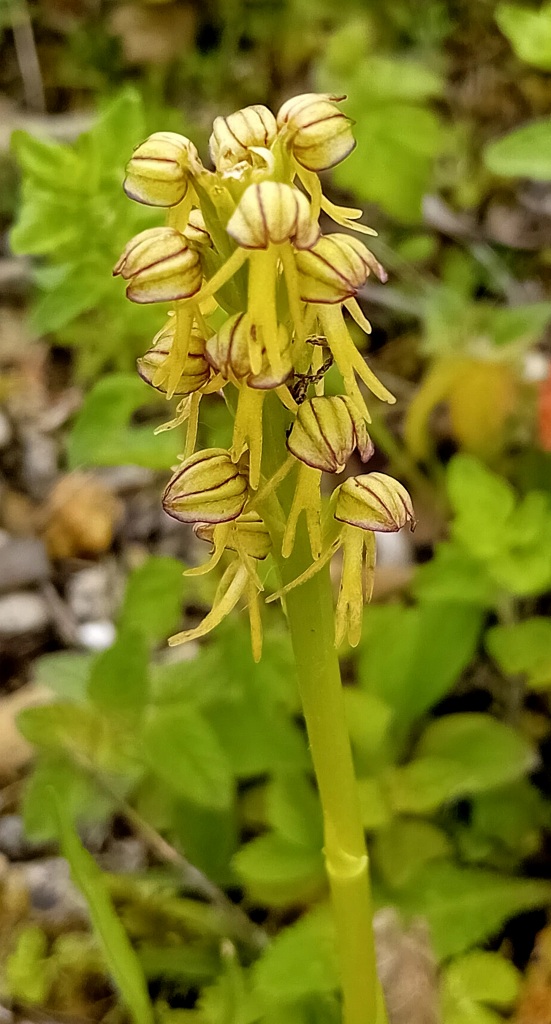
The enigmatic Man Orchid (pictured above) is fairly common and widespread across southern Europe but less so further north, being rare in Great Britain where it is classed as endangered. The flowers resemble small human figures with dangling arms and legs beneath (to my mind) copious Gatsby-style caps. These skinny, understated though subtly alluring plants grow 20 – 40 cm tall, most usually on alkaline grassland, and they are known to colonise former quarries.
I was intrigued to visit one such location where there were said to be around 30 subjects. Barnack Hills and Holes NNR (PE9 3EU, TF076046 – see here) is a former limestone quarry that in medieval times provided building material for the great cathedrals of Peterborough and Ely, and other churches of the region. It was worked out by the early 16th century, since when it has come to support more than 300 species of wild plant. Those include large populations of Green-winged, Early Purple and Chalk Fragrant Orchids; and this post’s subject is the site stand-out. A designated SSSI managed by Natural England and the local Langdyke Community Trust, the hummocky expanse of its 23 hectares (57 acres) comprises half of the remaining such limestone grassland in Cambs.
As a day previously, on entering the reserve I was faced with a large “haystack” in which to search for the needle of my quest. Wandering in and around at random, cordoned off enclosures fairly soon became visible. They were the reserve’s plant protection area that is marked approximately by the blue dot on the above plan. The most convenient parking place is therefore at 52.628294, -0.408247 in Walcot Road.
At the edge of one such enclosure I found a first two rather ragged specimens. Then I was approached by a local naturalist who led me to a more productive area with Man Orchid signage where we located another four better examples. The following pictures were all taken from the enclosure perimeters, so there were no doubt more plants further inside.
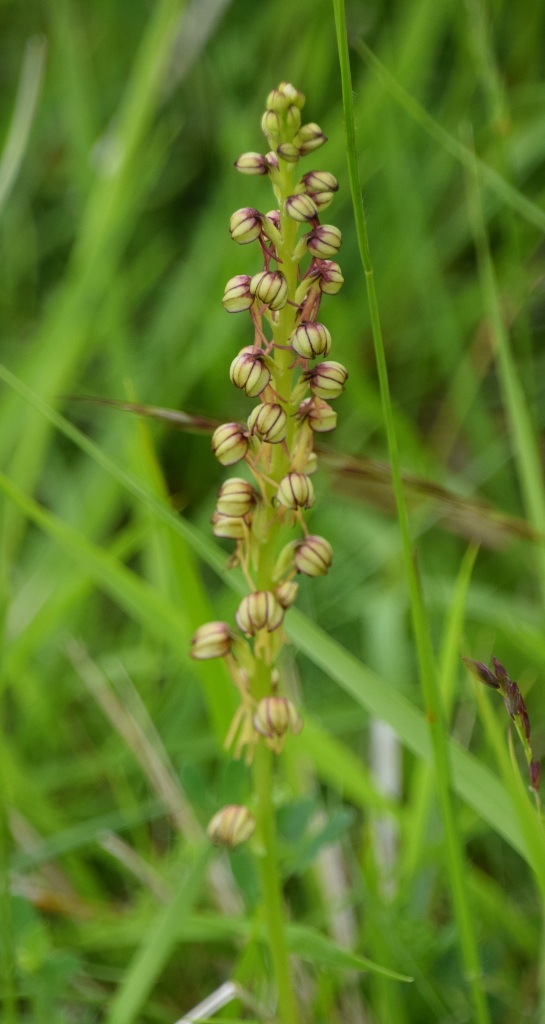
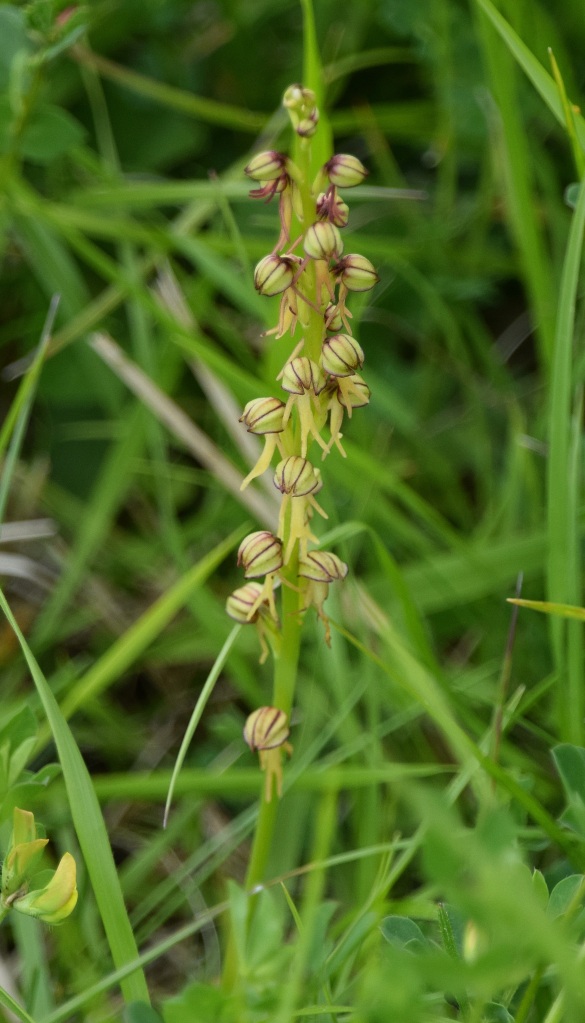
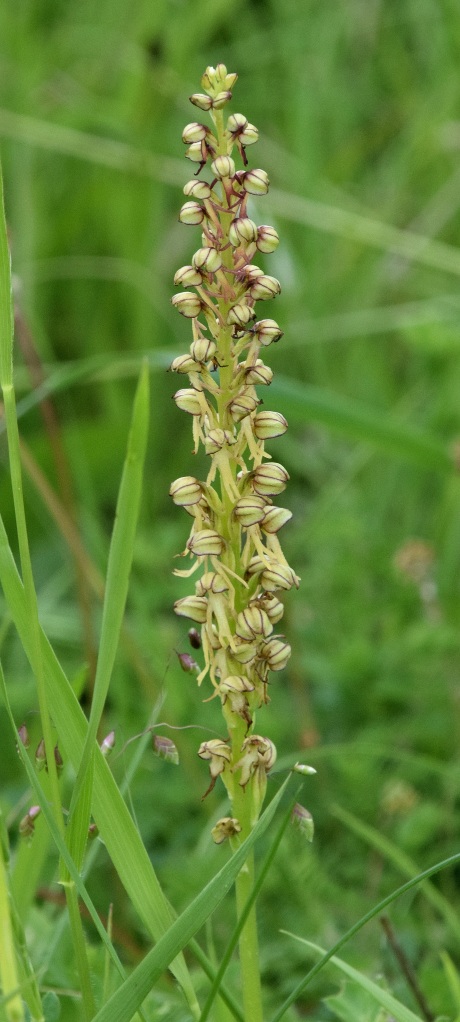
My chance acquaintance told me of a second former limestone quarry site three miles away, Swaddywell Pit (PE6 7EL, TF118034 – see here). Stone extraction at this outcrop of the lower beds of Lincolnshire limestone dates from Roman times and ceased in the 1920s. The greater part of the reserve is now a grassed-over former landfill site that must be crossed from a car park beside the Stamford Stone Company (52.614804, -0.353077). The managed area beyond, again by Langdyke Community Trust, contains a mosaic of habitats including open water, reed and scrub, limestone grassland and low cliff faces.
Inside I walked to its far north-western end, just before which cages gave away the presence of a good-sized group of Man Orchids. Some of the outliers were beautifully fresh (pictured below), while the majority were part concealed within the clutter of a fenced bank. The reserve also holds several other Orchid species, more rare wild plants,14 different Odonata and a nationally important cluster of Great Crested Newt.



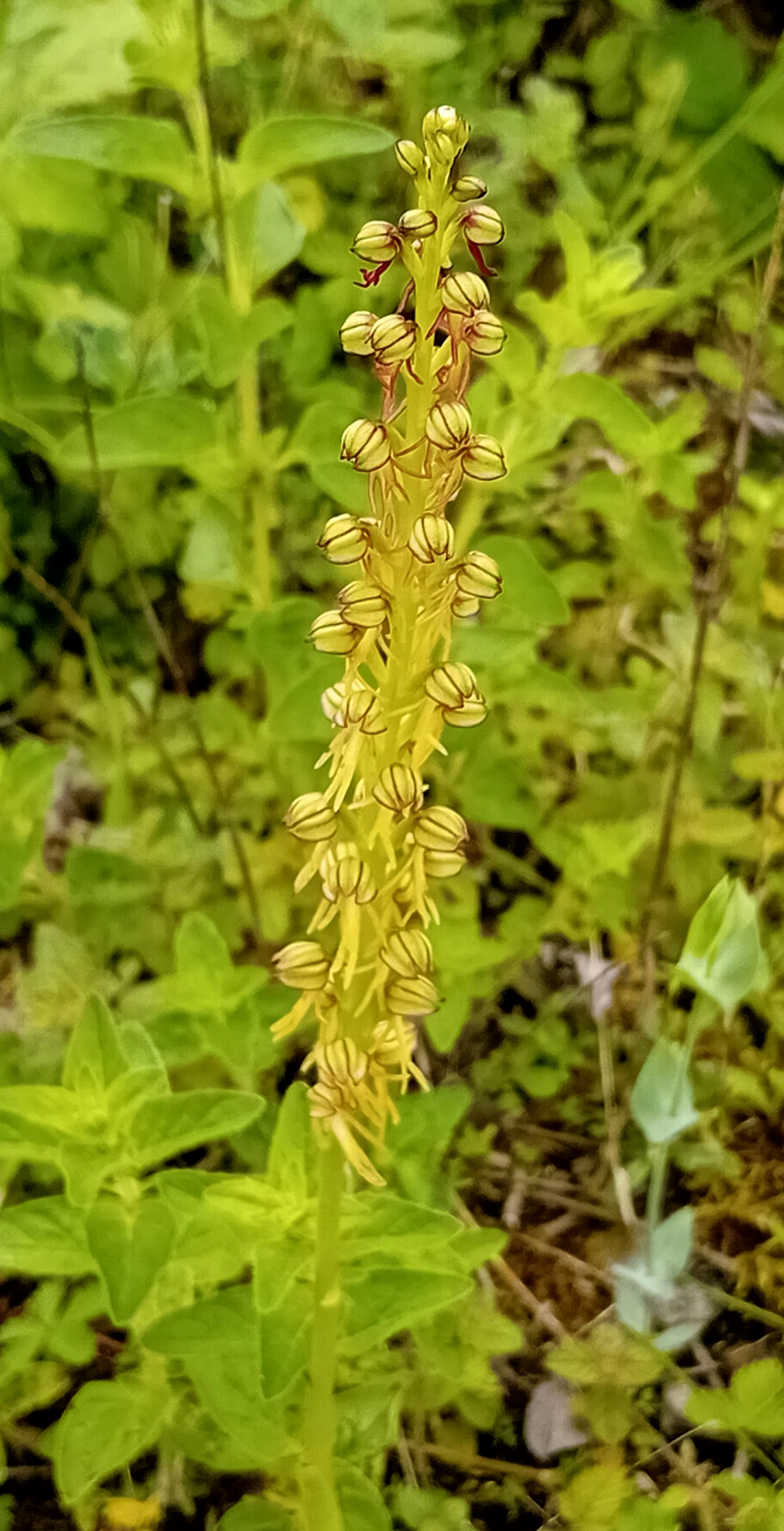

Man Orchids at Swaddywell Pit
Like Knocking Hoe NNR a day earlier, both this post’s locations hold huge populations of the nationally rare Pasque Flower. My home county of Oxon has two sites entailing a handful of plants each, by contrast with which it seems my visited area of Cambs offers a second Pasque grand central of this week. The following pictures are from BH&H.

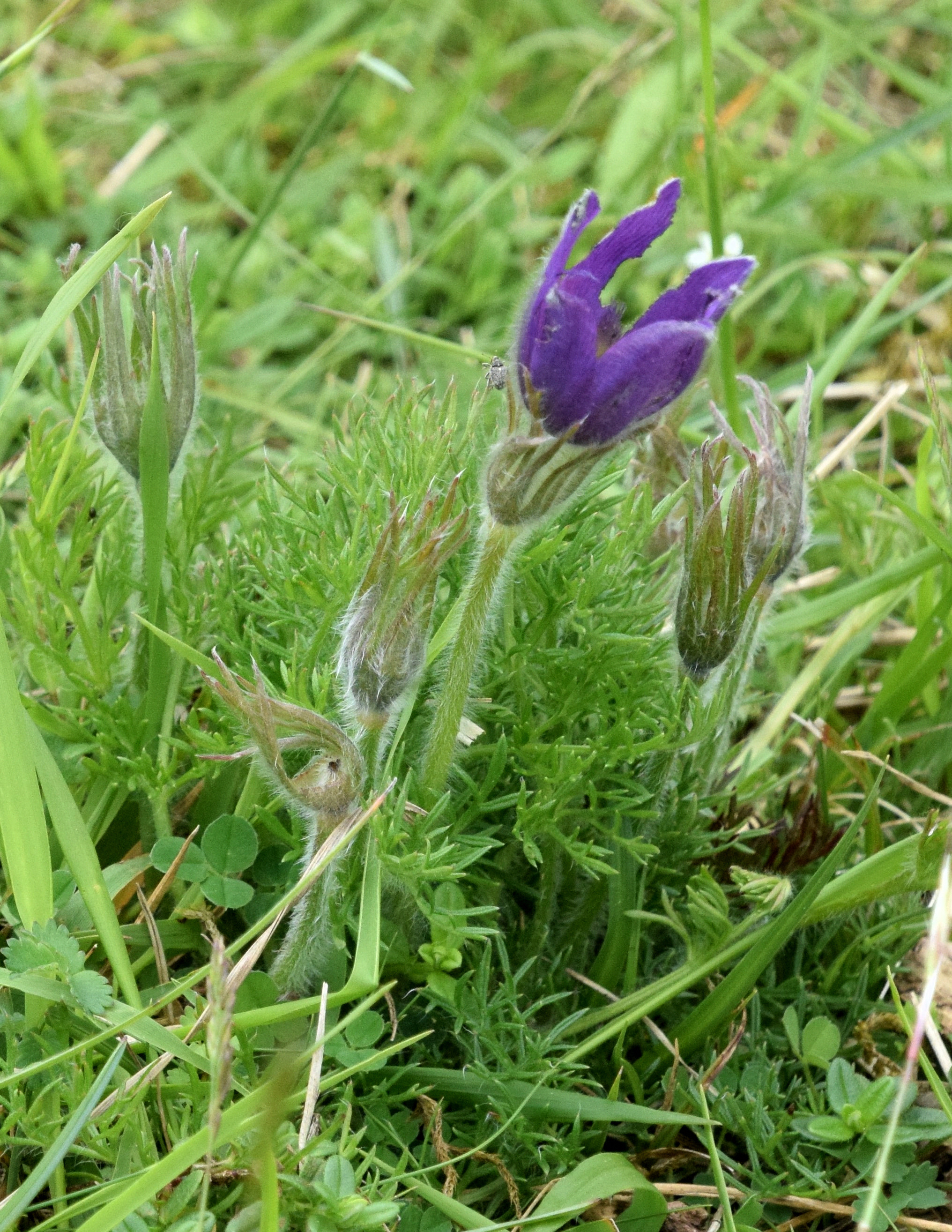
Pasque Flowers
The past two days in Beds and Cambs were truly stimulating and motivating. The intriguing wild places visited, and the specialty populations of their preserved habitats’ nationally rare plants are now set to dwell in my wildlife recollections for the season. A native Orchid checklist compiled after writing this post reveals I have now observed around two-thirds of the available total. How quickly another order reduces its required records to rare and more difficult stuff, as most of the remainder are! May 2024 has nonetheless been quite a statement month.


